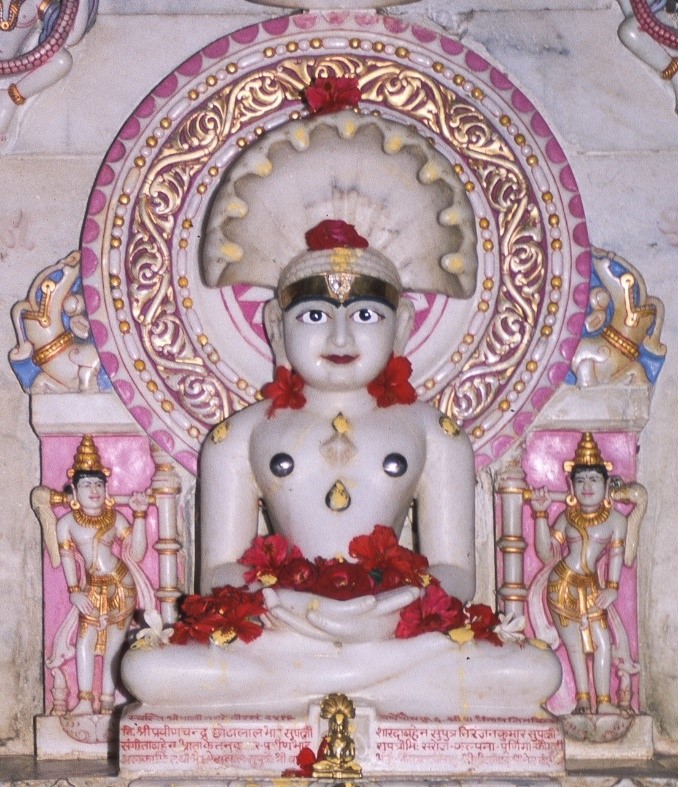Published on: October 9, 2021

CONTRIBUTION OF JAINISM TO INDIAN CULTURE
CONTRIBUTION OF JAINISM TO INDIAN CULTURE

A brief historical survey of Jainism attempted here gives an idea of the gradual spread of Jainism in different parts of India. The period between the ninth and the twelfth century A.D. is regarded as the golden period in the history of Jainism because Jainism made the striking progress. At this time, it enriched the Indian culture in many spheres.
TO THE SOCIETY
- Made the first attempt to mitigate the evils of Varna order.
- Treated the people of all the castes equally
- Followers, irrespective of their castes treated each other as brothers and sisters.
- Encouraged the growth of a healthy society.
- Showed the world unique power of organization through Jaina Sangha
- The doctrine of Karma made the individual conscious of his responsibility for all actions.
- Made no distinction of sex by admitting women into the Jaina Sangha
- Emphasis on Ahimsa and peace led to the dampening of the military spirit of the Indian people
- Helped a lot in the growth of charitable institutions. Its influenced on the kings and other people was abiding. The kings created many caves for the dwelling of the sages of different castes. They also distributed foods and clothes to the people. With the gradual march of time other rich people followed this practice. They created charitable institutions to serve the people.
- The contribution of Jainism to the cause of education is also noteworthy. The Jaina religious preachers, who wandered from place to place propagating their doctrines, proved to be potential media of mass education. The permission granted by Jainism for the admission of women into the order provided an impetus to the spread of education and philosophy among the ladies.
- In ancient times, the Jaina monasteries and temples became the seats of learning. Teachers used to impart education in these institutions to the people irrespective of caste and creed.
ECONOMIC AREA
- contributed a lot for the growth of trading community.
- At first, Jainism became popular among the traders and merchants. It fostered brotherhood among them which gave rise to guild system in future.
- The merchants became rich and got a special position in the society. Owing to their wealth and fame they came closer to ruling class. The cooperation between them brought stability in the society.
- Followers of Jainism were mostly bankers and merchants.
- Pottery was the favourable profession.
- Merchants used to travel in a caravan. Trade and industries were organized into guilds. Because of their wealth, they got special status in society. They visited the royal courts as representatives of business community.
- Several Jaina Inscriptions found at Mathura point out how people engaged in different industries contributed to the progress of Jainism.
- The commence of Rajasthan – Gujarat and Madhya Pradesh was controlled by the Jaina traders. They became prosperous by this trade and commerce.
INFLUENCE ON POLITICS
- Jainism influenced the Indians politics too.
- The great Chandragupta Maurya became the famous Chadramuni coming under the spell of Jainism.
- The mighty emperor Mahameghavahana Aira Kharavela became an ardent devotee of Mahavira Jaina.
- By following the principle of non-violence the kings became kind hearted and tolerant.
- This was a lasting impact of Jainism on Indian politics.
GROWTH OF LITERATURE
- Played a pivotal role in the development of the language of the country.
- Gave a definite literary shape to some vernaculars for the first time
- Mahavira preached in the mixed dialect called Ardha-Magadhi so that it could be easily understood by the people speaking “Magadhi” and “Sauraseni”. His teachings, classified into twelve books called “Srutanga” are written in Ardha-Magadhi. Later on jaina books were written in Prakrit language. Many regional languages developed out of the Prakrit Language, particularly Marathi language developed out of ‘Sauraseni’.
- Composed earliest important works in ‘Apabharamsa” and its first grammar. ‘Apabhramsa’ was current before the evolution of Hindi, Gujarati and Marathi. It has nexus with Sanskrit and Prakrit on the one hand and the modern vernaculars on the other hand. The jainas also wrote extensively in Kannada. Some of the scriptures of jainas, have written in Sanskrit.
- The jaina texts like ‘Anga’, ‘Upanga’, ‘Agama’ and ‘Kalpasutra’ were written in Sanskrit. Jainism thus enriched immensely Indian languages and literature.
ARCHITECTURE
- In the early centuries stupas in honour of their saints with their accessories of stone railings, decorated gateways, stone umbrellas, pillars, statues were erected. Beautiful jaina images are found in Mathura, Bundelakhand and northern Madhya Pradesh.
- The statue of Bahubali called Gomatesvara at SravanaBelgola and Karkal in Karnataka are examples of wonderful jaina architecture. The statue of Bahubali 21 metered high, carved out of a mass of granite was erected in 984 A.D. by Chamundaraya, the minister of Ganga king, Rachamalla.
- The jaina caves with their relief works and statues at Udayagiri hills, near Bhilsa in Madhya Pradesh, and Ellora in Maharashtra are excellent examples of jaina architecture and sculpture. The jainas also have constructed cave temples cut in rocks, found in Orissa are called Hatigumpha cover other examples of jaina architecture are found at Junagarh,. Junnar and Osmanabad.
- Many jaina centres of Pilgrimage, such as, the Parsvanath Hills, Pavapuri and Rajgiri in Bihar and Girnar and Palitana in Kathiawar have temples and other architectural monuments. The jaina temple at mount Abu in Rajasthan built in eleventh century, reached the highest perfection in jaina architecture.

